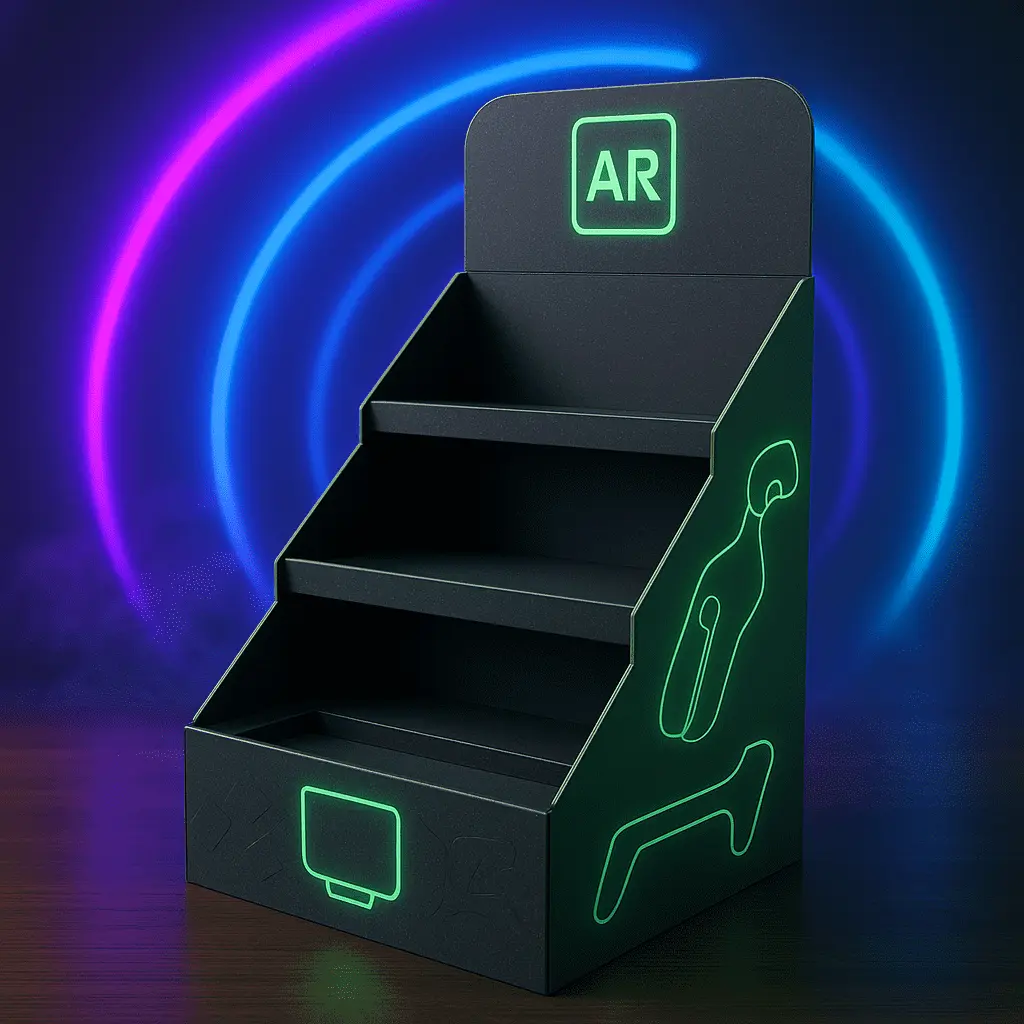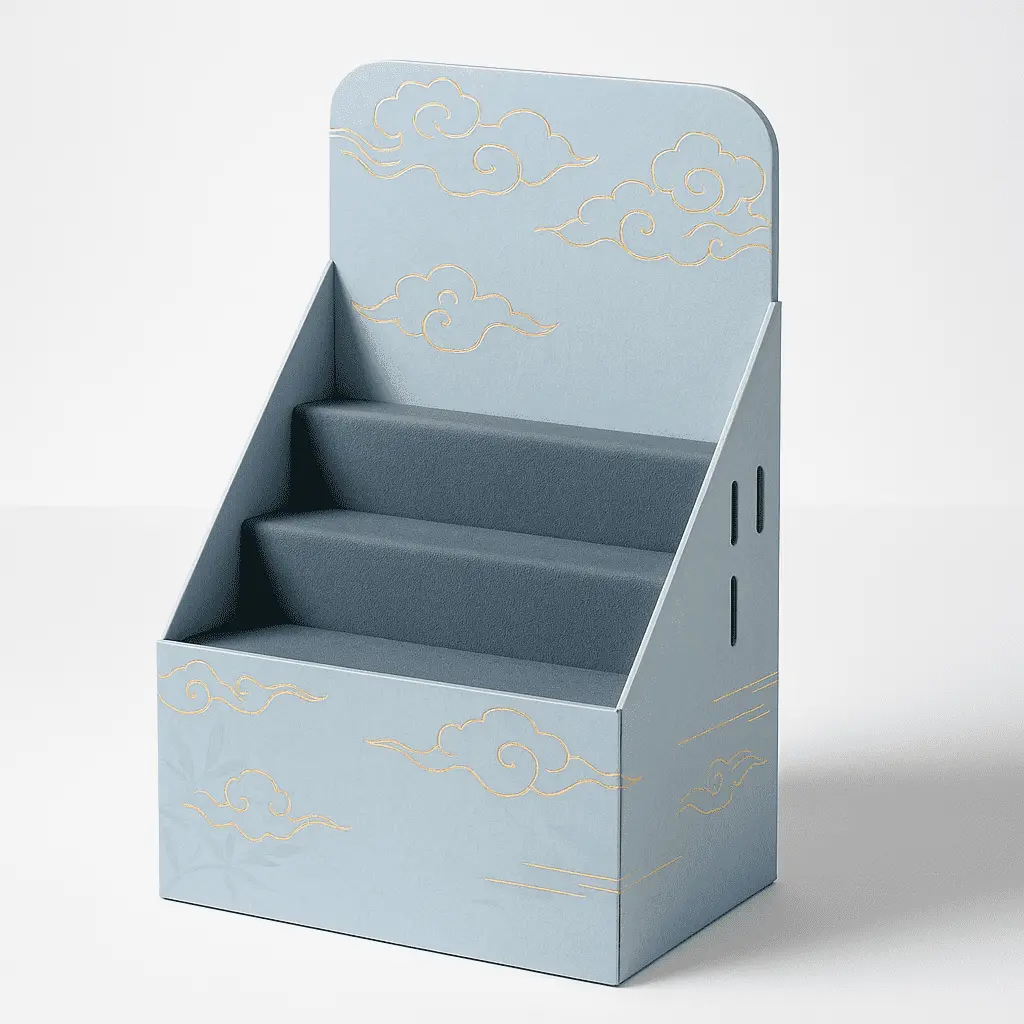PDQ Display Future Trends Every Buyer Must Watch
As the retail landscape evolves, PDQ displays are becoming increasingly crucial for brands seeking to capture consumer attention and drive sales. These Point of Purchase (POP) marketing tools are undergoing significant transformations, adapting to changing consumer behaviors and technological advancements. From interactive elements to sustainable materials, the future of PDQ displays promises innovation and efficiency. This article explores the emerging trends in PDQ displays that every buyer should be aware of to stay ahead in the competitive retail market. Understanding these trends will help businesses make informed decisions about their in-store marketing strategies and maximize the impact of their product presentations.

The Evolution of PDQ Displays in Modern Retail
Digital Integration: Bridging the Physical and Virtual Realms
The convergence of digital technology and traditional retail is reshaping PDQ displays. Interactive screens and QR codes are being incorporated into these displays, allowing customers to access product information, reviews, and even make purchases directly from their smartphones. This digital integration enhances the shopping experience, providing consumers with the depth of information they crave while maintaining the tactile benefits of in-store shopping.
Moreover, augmented reality (AR) is making its way into PDQ displays, offering immersive experiences that can showcase products in various settings or demonstrate their use. This technology not only captivates customers but also helps them make more informed purchasing decisions, potentially reducing return rates and increasing customer satisfaction.
Customization and Personalization: Tailoring the Shopping Experience
Retailers are increasingly recognizing the value of personalized experiences. PDQ displays are being designed with modularity in mind, allowing for easy customization based on store layout, product type, or even individual customer preferences. Some displays now feature sensors that can detect customer demographics and adjust content accordingly, ensuring that the right message reaches the right audience at the right time.
This level of personalization extends to the products themselves, with some PDQ displays incorporating on-demand printing or engraving services. Customers can customize products right at the point of purchase, adding a unique touch to their items and creating a memorable shopping experience.
Sustainability: Eco-Friendly Materials and Designs
As environmental concerns take center stage, the future of PDQ displays is undoubtedly green. Manufacturers are exploring eco-friendly materials such as recycled cardboard, biodegradable plastics, and even innovative materials made from agricultural waste. These sustainable options not only reduce environmental impact but also resonate with eco-conscious consumers.
Design innovations are also focusing on reducing waste. Reusable and modular PDQ displays are gaining traction, allowing retailers to update graphics and product offerings without discarding entire units. Some displays are even designed to be repurposed by consumers after their retail life, further extending their usefulness and reducing waste.
Smart Technology Integration in PDQ Displays
IoT and Data Analytics: Intelligent Display Management
The Internet of Things (IoT) is revolutionizing PDQ displays by enabling real-time monitoring and management. Smart sensors embedded in displays can track inventory levels, customer interactions, and even environmental conditions. This data is invaluable for retailers, allowing them to optimize stock levels, adjust pricing strategies, and understand customer behavior patterns.
Advanced analytics platforms can process this data to provide actionable insights, helping retailers make data-driven decisions about product placement, promotions, and display design. Some systems can even automate restocking processes, ensuring that PDQ displays are always well-stocked and presentable.
Voice-Activated Assistance: Hands-Free Shopping Experience
Voice technology is finding its way into PDQ displays, offering customers a hands-free way to interact with products. Voice-activated displays can provide product information, answer questions, and even process orders, catering to customers who prefer a touchless shopping experience. This technology is particularly valuable in high-traffic areas or for products that require detailed explanations.
The integration of natural language processing allows these voice-activated displays to understand and respond to a wide range of customer queries, effectively serving as an always-available, knowledgeable sales associate.
Dynamic Pricing and Promotions: Real-Time Adjustments
Electronic shelf labels (ESLs) and digital signage integrated into PDQ displays allow for dynamic pricing and promotional strategies. Prices can be updated in real-time based on factors such as inventory levels, competitor pricing, or time of day. This flexibility enables retailers to implement sophisticated pricing strategies that maximize sales and profitability.
Furthermore, these digital elements can display targeted promotions, countdown timers for limited-time offers, or even social proof in the form of customer reviews and ratings. The ability to quickly update content ensures that PDQ displays remain relevant and engaging, even in fast-paced retail environments.
Design Innovations Shaping the Future of PDQ Displays
Multi-Sensory Experiences: Beyond Visual Appeal
The future of PDQ displays is multi-sensory, engaging customers through sight, sound, touch, and even smell. Tactile elements encourage customers to interact with products, while ambient scenting can create an immersive brand experience. Audio elements, carefully designed not to overwhelm the retail environment, can provide product information or create an appropriate atmosphere.
These multi-sensory displays create memorable experiences that can significantly impact brand recall and purchase decisions. By engaging multiple senses, retailers can create stronger emotional connections between customers and products, potentially increasing conversion rates.
Flexible and Adaptable Structures: Meeting Diverse Retail Needs
As retail spaces become more dynamic, PDQ displays are evolving to be more flexible and adaptable. Modular designs allow for easy reconfiguration, enabling retailers to quickly adjust their displays to accommodate new products, seasonal changes, or special promotions. Some displays feature interchangeable graphic panels, allowing for rapid visual updates without replacing the entire structure.
Advanced materials and engineering are also making PDQ displays more lightweight and portable, facilitating easy movement within stores. This flexibility allows retailers to optimize their floor space and experiment with different product placements to maximize visibility and sales.
Interactive and Gamified Elements: Engaging the Modern Consumer
Gamification is emerging as a powerful tool in PDQ display design. Interactive elements such as touchscreens, motion sensors, or even simple mechanical interactions can turn product exploration into an engaging game-like experience. These elements not only attract attention but also increase dwell time, allowing customers to form deeper connections with products.
Some displays incorporate social media integration, encouraging customers to share their interactions or purchases, thereby extending the reach of in-store promotions to online platforms. This bridging of physical and digital realms aligns with the omnichannel strategies that many retailers are adopting to provide seamless customer experiences across all touchpoints.
Conclusion
The future of PDQ displays is bright, innovative, and customer-centric. As technology continues to advance and consumer expectations evolve, these point-of-purchase marketing tools will play an increasingly vital role in shaping the retail experience. From smart, data-driven displays to sustainable, multi-sensory designs, the trends discussed here represent the cutting edge of retail marketing. Buyers who stay informed about these developments and incorporate them strategically into their retail strategies will be well-positioned to capture consumer attention, drive sales, and build lasting brand loyalty in the competitive retail landscape of the future.
Contact Us
Ready to revolutionize your retail presence with cutting-edge PDQ displays? Whether you’re looking for compact designs to maximize small spaces or large, attention-grabbing displays for high-traffic areas, our PDQ displays can be customized in any size to perfectly suit your brand's needs. Contact us at support@fetchingprinting.com to explore how we can bring these innovative trends to life for your brand.
References
1. Smith, J. (2023). "The Future of Retail: PDQ Displays and Beyond." Retail Innovation Quarterly, 45(2), 78-92.
2. Johnson, A. & Lee, S. (2022). "Smart Technology Integration in Point-of-Purchase Displays." Journal of Marketing Technology, 18(4), 301-315.
3. Zhang, Y. (2023). "Sustainability in Retail: Eco-Friendly PDQ Display Solutions." Green Business Review, 7(3), 112-126.
4. Brown, R. (2022). "Consumer Engagement Strategies: The Role of Interactive PDQ Displays." International Journal of Retail & Distribution Management, 50(6), 589-603.
5. Garcia, M. & Patel, K. (2023). "Data-Driven Decision Making in Retail Display Management." Harvard Business Review, 101(4), 68-79.
6. Wilson, T. (2022). "Multi-Sensory Marketing: Enhancing In-Store Experiences." Journal of Consumer Psychology, 32(2), 201-215.




